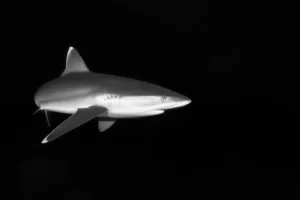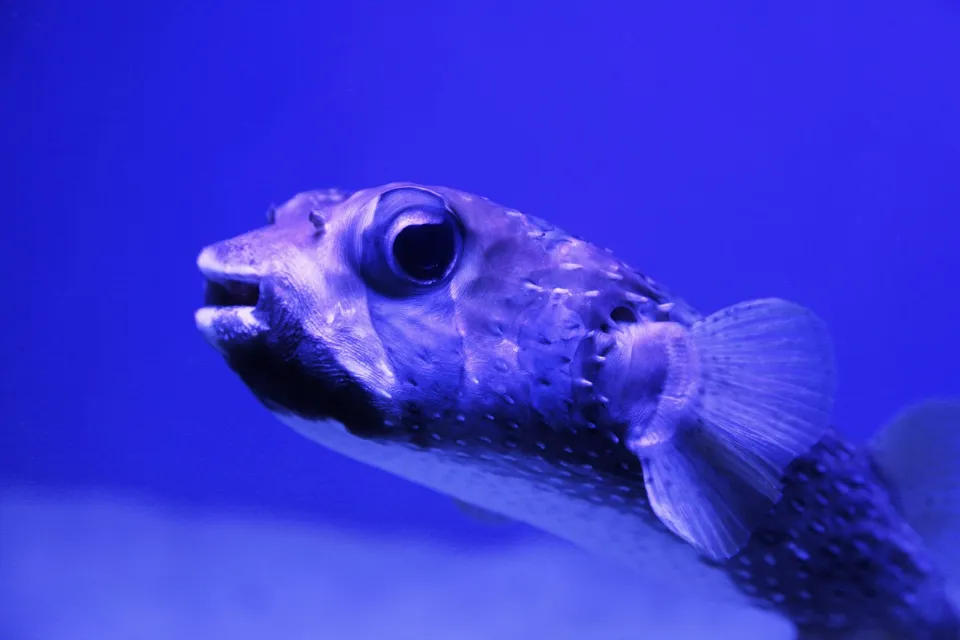
Some aquarium fish species’ common names can be very perplexing. One example is pufferfish vs blowfish: which is which? Do they refer to the same underwater creature under different names?
The family of fish known as Tetraodontidae, which consists of about 196 species, is also known by the common names blowfish and puffer.
Let’s examine which species would be better for your aquarium and examine the pufferfish vs. blowfish naming controversy.
Pufferfish Vs Blowfish: the Naming Issue
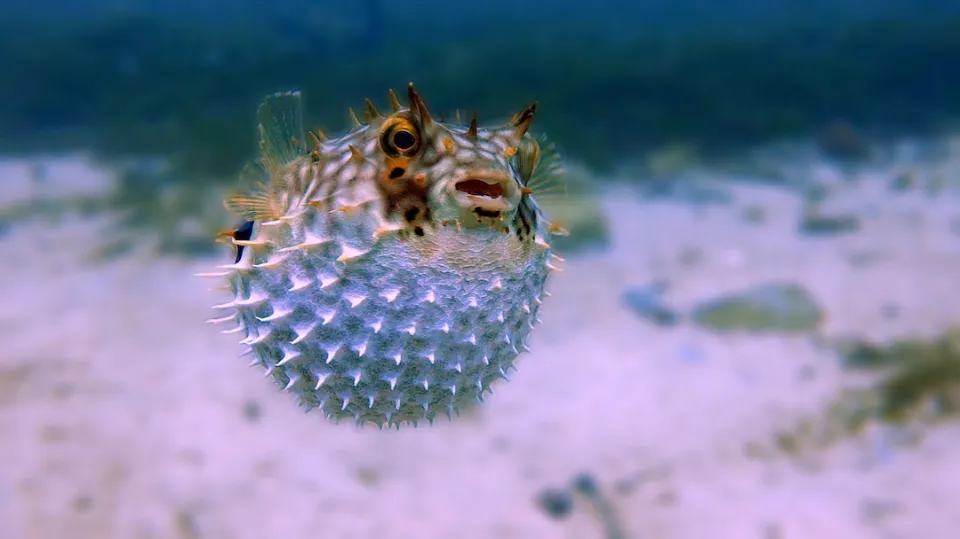
There is a reason scientists (and even us here at FantaSEA) tend to prefer using species’ scientific names rather than their common ones. Through the years, common names can become quite complicated.
While some animals, corals, and plants share a common name despite being entirely different creatures, others have so many common names that it is impossible to even remember what is being discussed.
A common naming issue is the debate between pufferfish and blowfish.
- Some people believe that the terms “blowfish” and “pufferfish” can be used to refer to any species of fish that can consume water in order to enlarge themselves and frighten off predators.
- Others believe that “blowfish” is the name for these fish, which belong to the family Diodontidae and have spines, while “pufferfish” refers to fish, which belong to the family Tetraodontidae and have smooth skin. To us, this makes more sense, but not by much.
- To make things more confusing, these fish species (all from the order Tetraodontiformes) have all sorts of other common names. Porcupinefish, balloonfish, bubblefish, globefish…
At FantaSEA Aquariums, we steer clear of the term “blowfish” because of this ambiguity. Porcupinefish is a common name for the spiked Diodontidae. We use pufferfish to represent the smooth Tetraodontidae.
What is a Pufferfish?
A pufferfish is a member of the family Tetraodontidae, a large family of fish that contains freshwater, brackish and marine species. They all have skin that is smooth and scaleless, and when threatened, they will all swell up to make it harder for predators to eat them.
Most puffers contain tetrodotoxin, a highly poisonous substance derived from bacteria in the foods they eat. These fish consume mollusks and a wide range of other invertebrates as food. They have a powerful set of fused teeth that they use to crack these tough foods.
There are loads of different pufferfish species, from the tiny freshwater dwarf puffer to the 18″ stars and stripes puffer. Many of them are well-known aquarium fish, but because of their particular diets and high waste production, they frequently aren’t the best option for beginners.
What is a Blowfish?
As previously mentioned, in order to make it a little clearer which fish we are talking about, we prefer to call blowfish porcupinefish. Members of the Diodontidae family, porcupinefish get their common name from their spine-covered bodies.
Porcupinefish can inflate themselves in the event of danger, just like their relatives the pufferfish. They both have a diet high in mollusks and other invertebrates and both contain the deadly tetrodotoxin.
There aren’t many tiny porcupinefish in the world. The most popular species in the aquarium hobby is Diodon holocanthus (the long-spine porcupinefish), which reaches a whopping 20″ in length.
Should You Get a Pufferfish Or Blowfish for Your Aquarium?
It’s a wise decision to include one of these members of the general order Tetraodontiformes in your aquarium. Any of them would be fascinating fish, no matter which you choose.
They’re quite intelligent, their hunting behavior is fascinating to observe, and some aquarists even claim to be able to form a bond with their pufferfish, blowfish, or porcupinefish, which have been known to recognize their keepers.
There isn’t much of a difference between the two in terms of how they are cared for and behave in the aquarium. They aren’t really reef safe due to their invertebrate-based diet. They frequently nibble at their long-finned tank mates, and if they can get their teeth on some small fish, they may even try to eat them.
Size is usually what makes the difference. For a lot of aquarists, porcupinefish are just not an option: we don’t know a lot of people with space in their home for a 200+ gallon aquarium.
The smallest saltwater species (such as the Valentini puffer from the genus Canthigaster) only require 30 to 40 gallons of space, whereas the smallest freshwater species (Carinotetraodon travancoricus) can be kept in an aquarium as small as 10 to 20 gallons. Undoubtedly much more available, and it doesn’t hurt that Canthigaster puffers have amazing looks!
What Makes the Poisons of Puffer Fish and Blowfish Deadly?
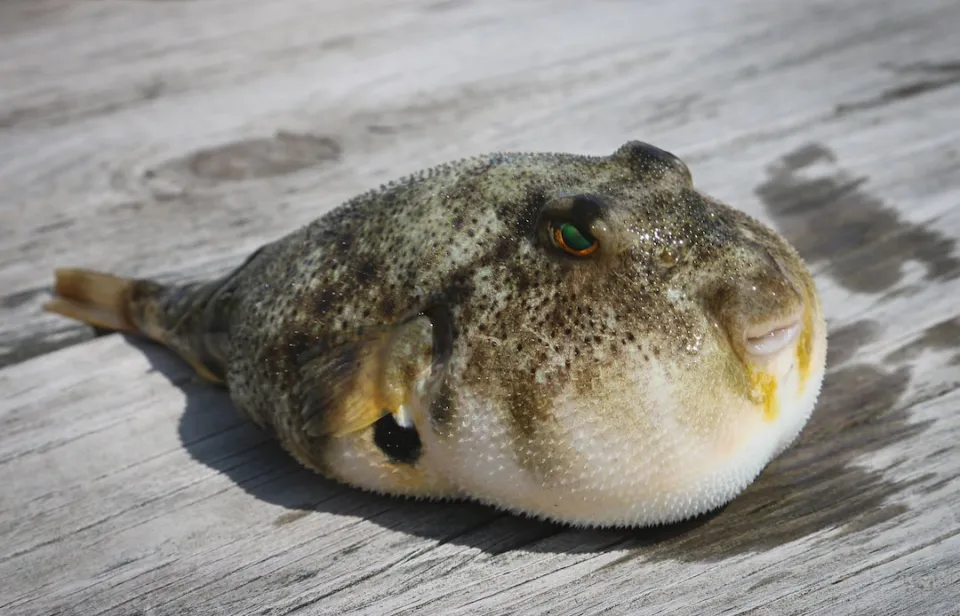
Poisonous plants and animals come in many different varieties. Others, like the puffer fish, might be less well known than others, such as the rattlesnake or the cobra.
Puffer fish are a type of fish that can produce a toxin that can be deadly to humans. The toxin is made up of a molecule called tetrodotoxin which is very powerful and can cause paralysis and death in humans if ingested.
Puffer fish have a reputation for being toxic, but they don’t actually contain any poison. Instead, they release a toxin that renders them toxic to predators.
Although eating puffers poses no risk to humans, other fish may be at risk from their toxin.
Eating certain varieties of pufferfish can result in puffer fish poison, a type of poisoning. Numerous symptoms, such as digestive problems and even death, can be brought on by the poison.
In Asia, pufferfish is a common food and is frequently consumed raw or as sushi.
The liver, flesh, and eggs of the blowfish contain the toxin known as blowfish poison. If consumed, it can seriously ill. Eating the fish raw or undercooked is the main cause of blowfish poisoning.
In many waterways, blowfish are a common and favored fish. They are renowned for their robust appetites and resistance to physical abuse.
However, if you get a blowfish angry, you may not know what you’re getting yourself into. On their dorsal and anal fins, these fish have venomous spines that, if activated, can deliver a painful dose of poison.
A type of toxin called blowfish poison can be discovered in different blowfish body parts. Humans who consume blowfish poison may experience respiratory issues, renal failure, and even pass away. Another well-liked illegal substance is blowfish poison.
Where Do Blowfish and Puffer Fish Live?
Blowfish are native to the ocean’s depths, where they can be found on and around coral reefs. Additionally, they can be found in mudflats, mangroves, and seagrass beds.
Some blowfish reside in rivers and streams of freshwater, while others are found in the estuaries of sizable oceanic islands.
In Southeast Asia, China, Japan, and the Philippines, blowfish can be found in warm, tropical water. They can withstand a wide range of temperatures and can live in both freshwater and saltwater.
Blowfish are solitary fish and live in caves, under rocks, in coral reefs, or near the water’s surface.
Blowfish live in warm water in the ocean. Where they can find plenty of food is close to the ocean’s bottom. Blowfish use a potent poison to kill other fish.
There are over 500 different species of puffer fish, and they’re found in all kinds of water environments- from the cold depths of the ocean to the hot springs on a lava flow.
They can also be found in some unexpected places, like the canals and sewers that cities maintain. Due to their ability to expand their bodies by three times their original size, puffers are given their nickname because they resemble small balls.
Both freshwater and the ocean contain pufferfish. They occupy both warm and chilly environments. Pufferfish have a maximum length of two meters and have the ability to swell to the size of a car.
Although puffer fish can be found in many tropical and temperate areas, they are most prevalent in warm waters. They occupy areas near the water’s surface and on reefs. Some puffer fish can grow to a length of 2 meters (6 feet).
What Do Blowfish and Puffer Fish Eat?
Although puffer fish are tiny and appear harmless, they have a powerful bite. These fish consume a variety of foods, including krill, plankton, and small prey.
There are pufferfish all over the world. They can be found in both warm and cold seas, and are frequently found in coastal waters. Puffer fish are unable to consume solid food because they lack a stomach.
They obtain their energy by consuming plankton, small fish, and other aquatic animals.
Blowfish, also known as pufferfish, are unusual fish that have the ability to expand their stomachs to store food. So that the gas can kill their prey, they can then release it. Small fish, crustaceans, and eels are a few examples of typical puffer fish prey.
The ability of blowfish to suck the fluids from other fish has earned them a bad reputation, but what do they actually eat? The primary diet of blowfish is algae, turfgrass, sedges, and other aquatic plants.
Blowfish are a type of fish that inhabits both fresh and salt water. These fish have skin folds on their tongues that can extend up to twice as long as their bodies.
The fish uses this tongue to suck up water and food from the water’s surface. In addition to their mouths, blowfish have a breathing apparatus called a spiracle on top of their heads.
Blowfish are a popular fish that are found in many different types of water. Plankton, small fish, and crustaceans are some of the foods that blowfish prefer to eat, though they can eat a wide variety of things.
Blowfish Vs Puffer Fish: What is the Difference? (Summary)
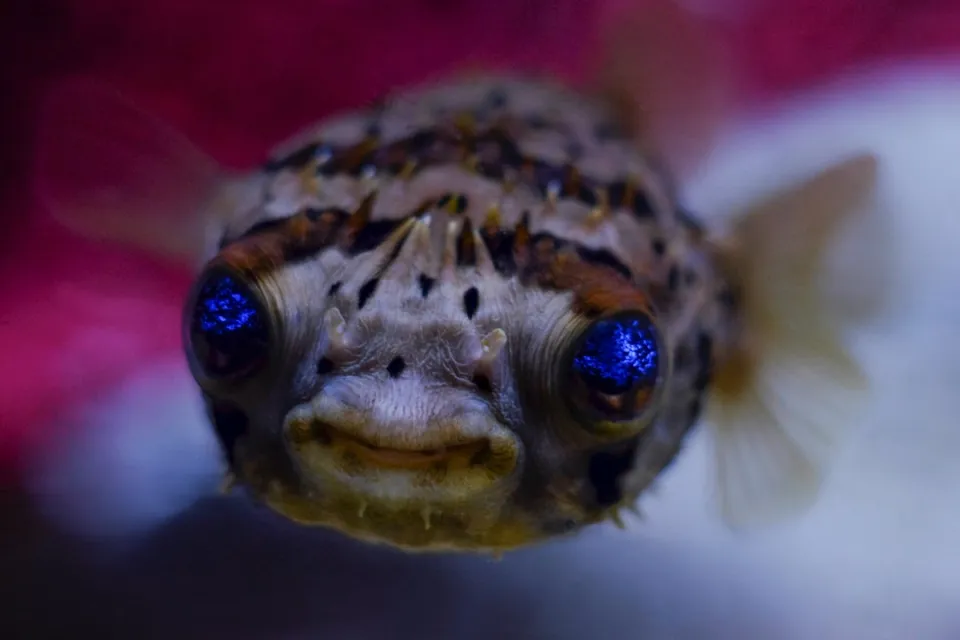
What distinguishes puffer fish from blowfish?
There are many fish in the ocean, but some are more sought-after by fishermen than others. The blowfish, a deep-sea fish that can be caught in a variety of ways, is one such fish. The pufferfish is a different well-known deep-sea fish.
But how do these two fish differ from one another?
Both pufferfish and blowfish have the ability to inflate their bodies in order to improve their chances of escaping from predators.
Blowfish can inflate their stomachs up to seven times their original size while pufferfish can inflate their whole body to twice their original size! These fish use this strategy not only to flee danger but also to defend themselves by spitting out water and toxins.
Blowfish and pufferfish are both fish but they have a few key differences. It may be easier for blowfish to survive in deep water because they can withstand water pressure much better than pufferfish. Pufferfish are helpful for researching marine biology because of their enhanced capacity to expel toxic gas.





